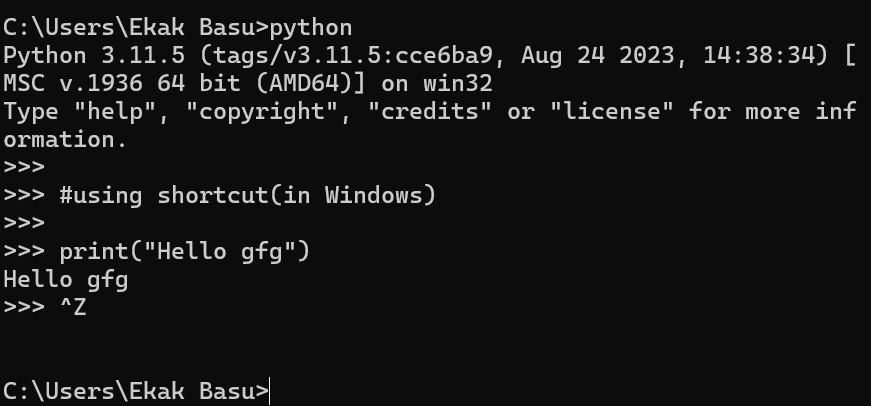
|
|
Exiting a Python program might seem like a straightforward task, but there are several ways to do it depending on the context and requirements of your script. Whether you want to gracefully shut down your application or terminate it immediately, knowing the right approach can help you manage your code more effectively. In this article, we will explore various methods to exit a Python program in the terminal. Running a Python Program in TerminalBefore diving deep into exiting a Python program in the terminal, you should know how to run a program in the terminal. First, make sure that you have Python installed on your system. You can check this, by writing the following command in the command prompt. If Python is already installed, it will display the current Python version on your system. python --version
 Verify Python Installation Now let us see step by step how we can run a Python program in the terminal. Open TerminalFirst, open the terminal/command prompt in your system by typing terminal or cmd in the search box and press enter. Initialize Python InterpreterNext, you need to initialize the Python interpreter in the terminal so that you can easily execute Python commands.  Initializing Python Interpreter Write and Execute CodeOnce the Python interpreter is initialized in the terminal window, we can start typing the Python code and press enter to execute the systems.  Running Python Program Exiting Python Program in the TerminalExiting a Python program involves terminating the execution of the script and optionally returning a status code to the operating system. The most common methods include using Let us discuss each of these methods in detail with proper example. Using sys.exit()The sys.exit() function is a part of the Python sys module and is widely use to exit a python program. This function is used to terminate the program in the terminal. When this function is used, its exits the program while ignoring the rest of the code present after it, i.e., the system doesn’t execute the code that are write after the sys.exit() function. Syntax: import sys Below is an image of a Python program using sys.exit() in a terminal.  Exiting Python Program using sys.exit() Using exit() and quit() functionsThe exit() and quit() functions are built-in functions used in Python. We don’t have to import any module for this function. It is the shortcut for sys.exit(). It is also use to terminate a program similar to sys.exit(), but it more user friendly and preferred more among coders. Syntax for exit(): #code Below is an image of a Python program using exit() in a terminal.  Exiting Python Program using exit() Syntax for quit(): #code Below is an image of a Python program using quit() in a terminal. .png) Exiting Python Program using quit() Using Keyboard ShortcutsWhile writing code in a Python terminal if you find a need to terminate the program you can use keyboard shortcuts as well to exit the program.
 Exiting Python Program using Keyboard Shortcut (Ctrl+Z) ConclusionExiting a Python program can be done in various ways depending on the context and requirements. While |
Reffered: https://www.geeksforgeeks.org
| Python |
Type: | Geek |
Category: | Coding |
Sub Category: | Tutorial |
Uploaded by: | Admin |
Views: | 19 |